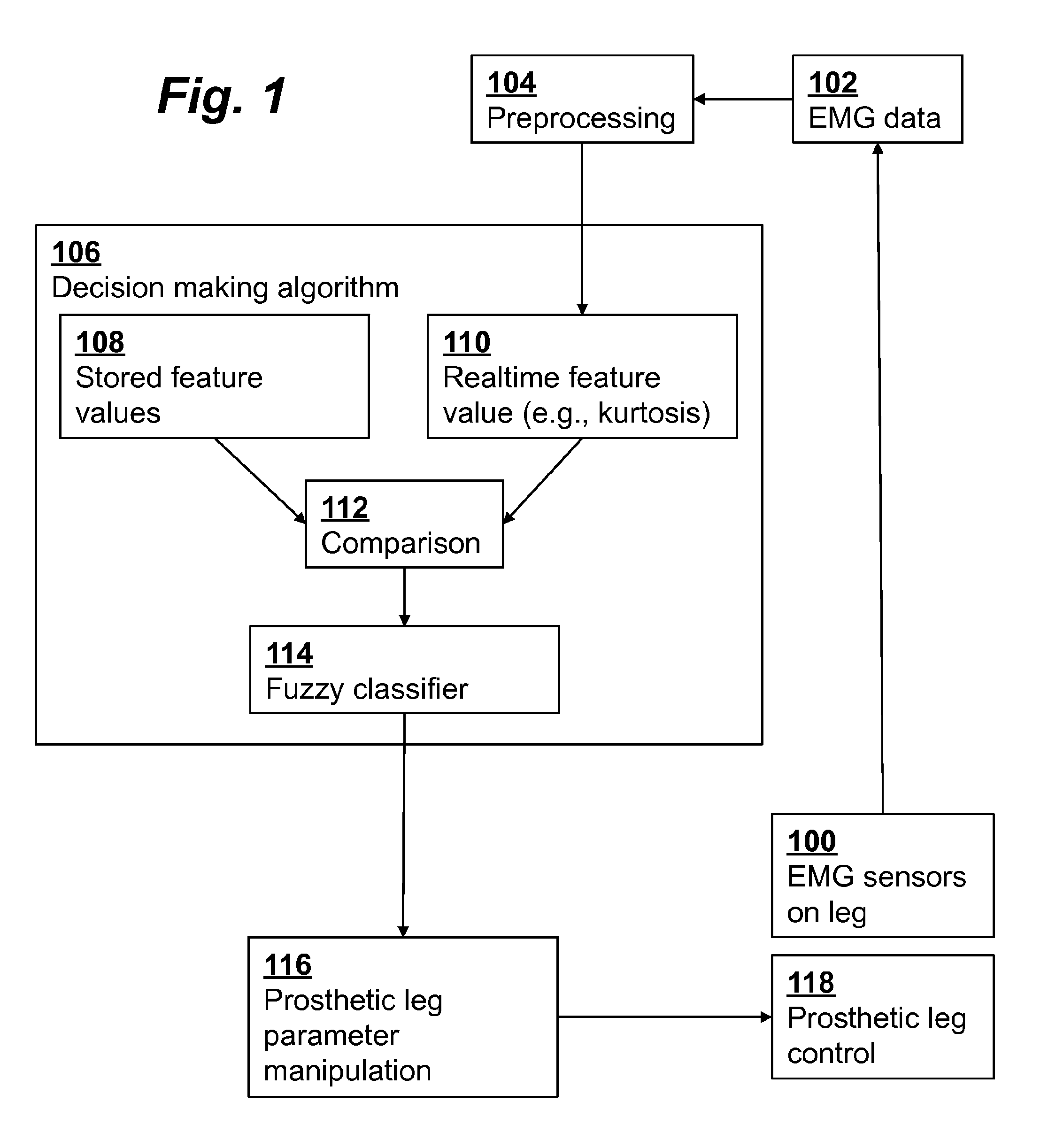Powered prosthetic devices using EMG-based locomotion state classifier
a technology of locomotion state and powered prosthetics, applied in the field of prosthetics, can solve the problems that current control strategies within the fsm approach do not allow amputees a seamless and natural transition between locomotion modes, and achieve the effects of enhanced control, more user-friendly application, and more intuitive device tuning
- Summary
- Abstract
- Description
- Claims
- Application Information
AI Technical Summary
Benefits of technology
Problems solved by technology
Method used
Image
Examples
case 1
[0042] For locomotion transition state C1, the if-else rules are as follows:
[0043]If (k1−K) is LOW and (k2−K) is HIGH, then select class c1 (GL to SD).
[0044]If (k1−K) is HIGH and (k2−K) is LOW, then select class c2 (GL to SA).
[0045]For other transitions we will have similar k terms from training data which are stored in the microprocessor. For example k6 for GL to RA (Ramp Ascent). Accordingly, the rules can be designed to facilitate the additional k terms. Here we show an example for SA and SD as representative transitions. The number of rules will increase as the number of transition types increase.
case 2
[0046] For locomotion steady state C2, the if-else rules are as follows:
[0047]If (k3−K) is LOW and (k4−K) is HIGH and (k5−K) is HIGH, then select class c3 (GL).
[0048]If (k3−K) is HIGH and (k4−K) is LOW and (k5−K) is HIGH, then select class c4 (SA).
[0049]If (k3−K) is HIGH and (k4−K) is HIGH and (k5−K) is LOW, then select class c5 (SD).
[0050]The weighting strength for each rule is defined by F(Rule)=μ(LOW)*μ(HIGH).
[0051]In effect, the two-step classification helps increase computational efficiency of the classification.
[0052]In another embodiment, classification may be performed using matching scores (MS) and then discriminating functions in the form of if-else rules. For example, if Sk is the stored histogram for class k where k is W, W to SA, or SA, then for real time data spectrogram, T, the matching score MSk for a class k may be defined as follows:
MSk=Σm=1, 7 Σi=1, M Σj=1, N Sk(i, j, m)*Ti, j, m
where i and j are the time and frequency bin index, respectively, and m is the index ...
PUM
 Login to View More
Login to View More Abstract
Description
Claims
Application Information
 Login to View More
Login to View More - R&D
- Intellectual Property
- Life Sciences
- Materials
- Tech Scout
- Unparalleled Data Quality
- Higher Quality Content
- 60% Fewer Hallucinations
Browse by: Latest US Patents, China's latest patents, Technical Efficacy Thesaurus, Application Domain, Technology Topic, Popular Technical Reports.
© 2025 PatSnap. All rights reserved.Legal|Privacy policy|Modern Slavery Act Transparency Statement|Sitemap|About US| Contact US: help@patsnap.com



